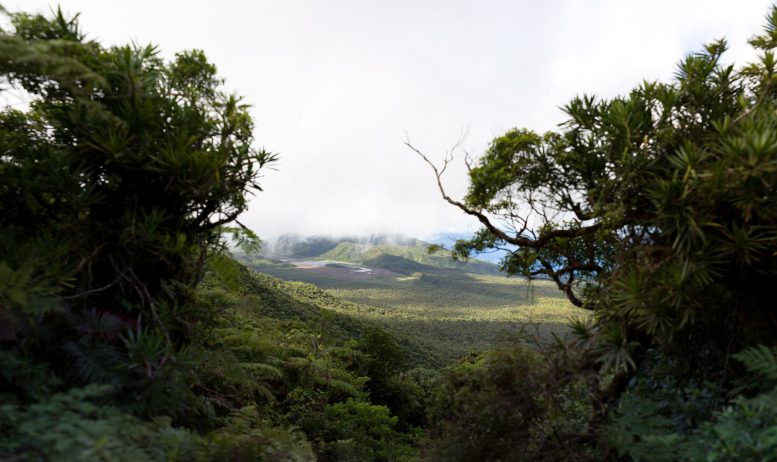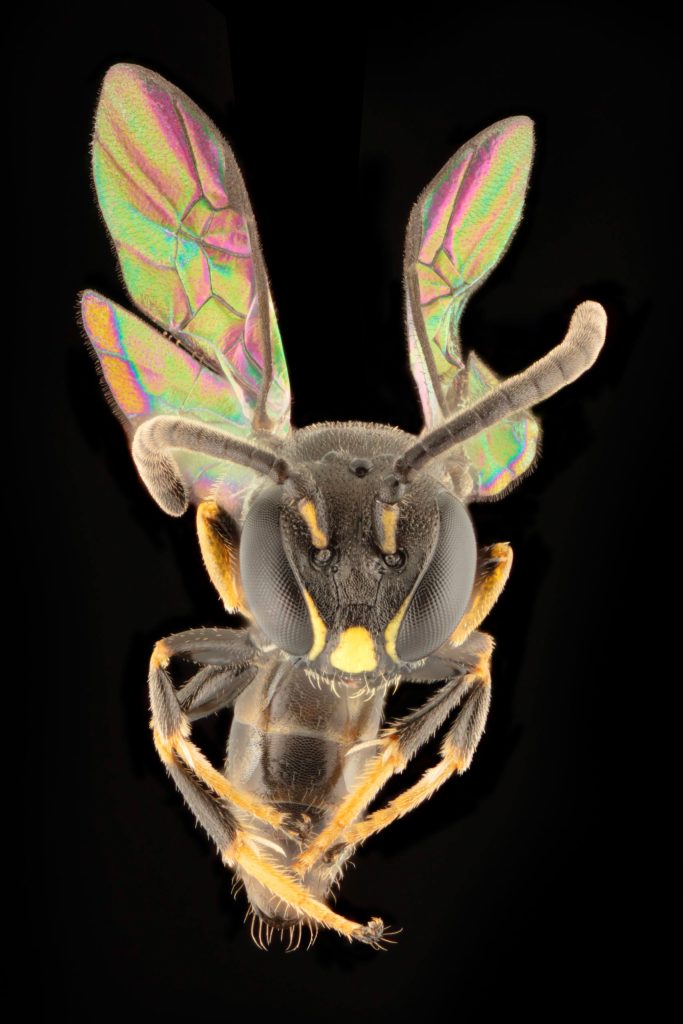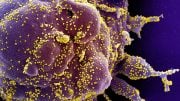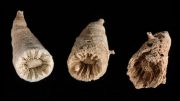
Lake Tagimoucia as seen from Des Voeux Peak on Taveuni, Fiji. Both the lake and the peak have been the sites where new species were found. The Peak in particular is where the first Fijian Hylaeus were collected for this project. Credit: James Dorey Photography
Recent scientific research conducted by Flinders University has led to the discovery of eight new bee species in the Pacific and has provided fresh insights into the behavior of birds in Fiji on Viti Levu Island.
The studies, both funded by fieldwork supported by the Australian Government’s New Colombo Mobility Plan Program, highlight the potential for species discovery, ecological and conservation knowledge, and cultural engagement from Asia-Pacific research collaborations.
In the past 10 years, Australian Government-funded Flinders University field trips have worked closely with the University of the South Pacific, government agencies, and other researchers to support important ecology and conservation work in Fiji.
Flinders PhDs Dr James Dorey and Dr Ben Parslow joined researchers from Fiji, Hawaii, and Australia to study a totally new group of bees in forest canopies.
Discovery of New Bee Species
“Our investigations have discovered an extra group of endemic bees in Fiji that have remained ‘hidden’ in the forest canopy despite years of looking and sampling,” says Australian native bee expert Dr Dorey, now a lecturer at the University of Wollongong.
“Through our local collaborations, we also know that these bees are widespread in the Pacific.
“Happily, this also solves ‘Michener’s mystery’ about how these tiny (3-5mm) Hylaeus made it to French Polynesia, dispersing over time from their closest relatives which were 4000km north in Hawaii and 6000km west in Australia.”

This little bee (3–5 mm) bee Hylaeus derectus is only known thus far from near Mt Nadarivatu on Viti Levu, Fiji. It was collected from a canopy-flowering mistletoe. Credit: James Dorey Photography
Six Fijian species found foraging in trees are only the second native genus on the archipelago. One was found in French Polynesia (“more than 3000km as the bee flies”) and one in Micronesia – further highlighting their value of forests to pollinators – and the potential for many more species to be found across the Pacific.
“Unlike the super-generalist Homalictus bees that inhabit Fiji and likely benefitted from ancient human-clearing, the Fijian Hylaeus are likely very vulnerable to anthropogenic clearing and may be critical pollinators in forest habitats,” says Dr Dorey.
Conservation Insights from Long-term Studies
Co-author Dr Parslow, a South Australian Museum taxonomist, says the study emphasizes the benefits of long records of sampling in understanding diversity and conservation measures required for bees and other pollinators – particularly for land and environmental managers.
The study references the pioneering work of US entomologist Charles Michener who wrote the seminal work Bees of the World in 2007, including studies on the social evolution of the Halictidae bee family in the 1960s.
In another study, Flinders University and University of South Australia (UniSA) researchers worked with University of the South Pacific (USP) researchers to understand more about native forest birds in Fiji.
USP Dr Alivereti Naikatini, with Flinders Professor Sonia Kleindorfer (now at the University of Vienna) and UniSA Associate Professor Gunnar Keppel, have recently published on the insect foraging and territorial defense of Fiji’s forest birds – focusing on the impacts of human disturbance and other threats to their survival.
Common bird species silvereye, Fiji white-eye, Vanikoro flycatcher, and the Slaty monarch were studied in community-managed national parks on Viti Levu Island were studied over three years, from 2017 and 2019.
This kind of information can be useful to plan habitat refuge and protection under conditions of climate change or further human activity, says Flinders Professor Kleindorfer.
References: “Elevational differences in territory defence response in native (endemic and non-endemic) forest birds on Viti Levu Island, Fiji” by Alivereti N. Naikatini, Gunnar Keppel, Gilianne Brodie and Sonia Kleindorfer, 27 February 2024, New Zealand Journal of Zoology.
DOI: 10.1080/03014223.2023.2268533
“Canopy specialist Hylaeus bees highlight sampling biases and resolve Michener’s mystery” by James B. Dorey, Olivia K. Davies, Karl N. Magnacca, Michael P. Schwarz, Amy-Marie Gilpin, Thibault Ramage, Marika Tuiwawa, Scott V. C. Groom, Mark I. Stevens and Ben A. Parslow, 26 January 2024, Frontiers in Ecology and Evolution.
DOI: 10.3389/fevo.2024.1339446









Be the first to comment on "Hidden in Plain Sight: Biologists Have Finally Solved “Michener’s Mystery”"